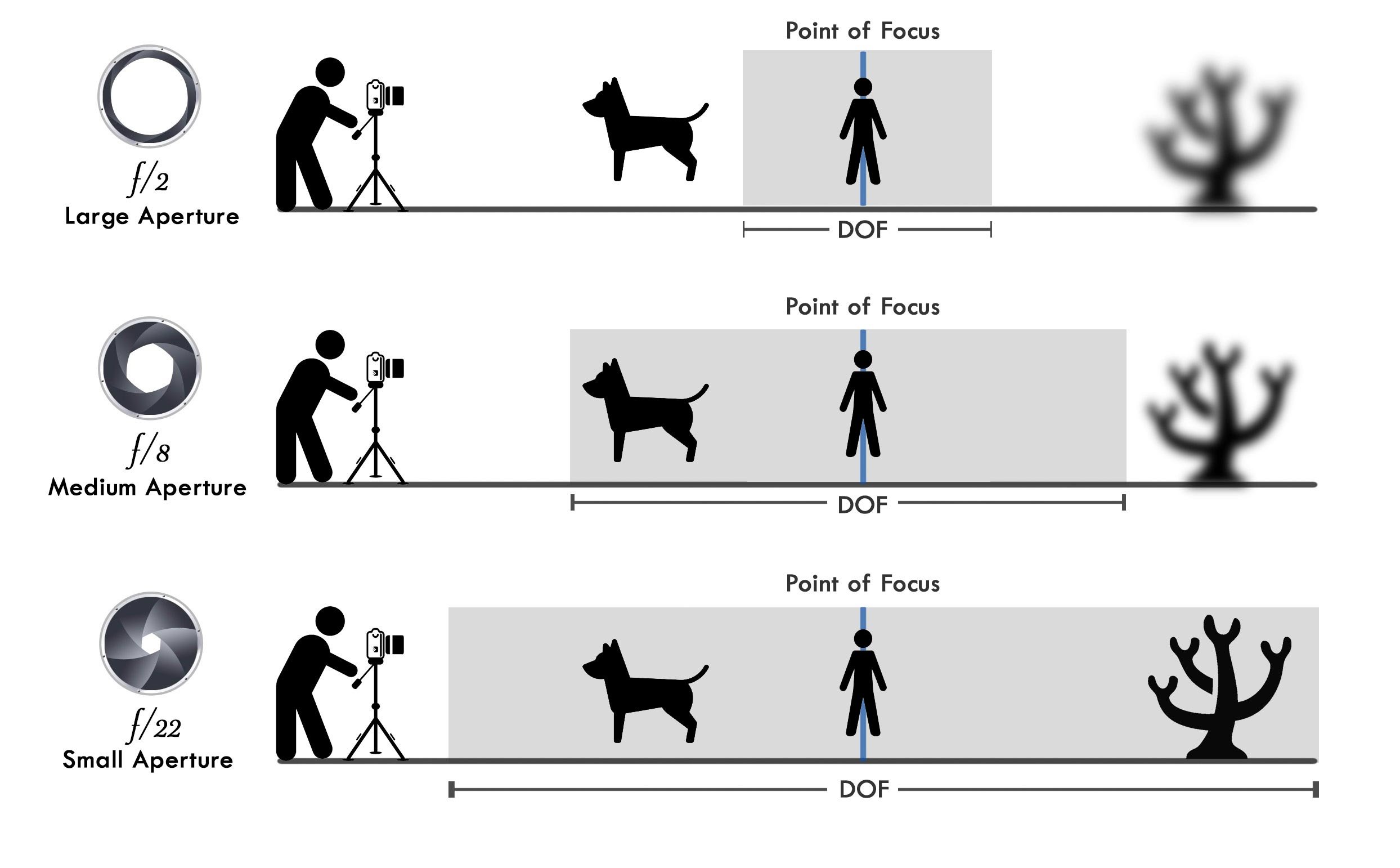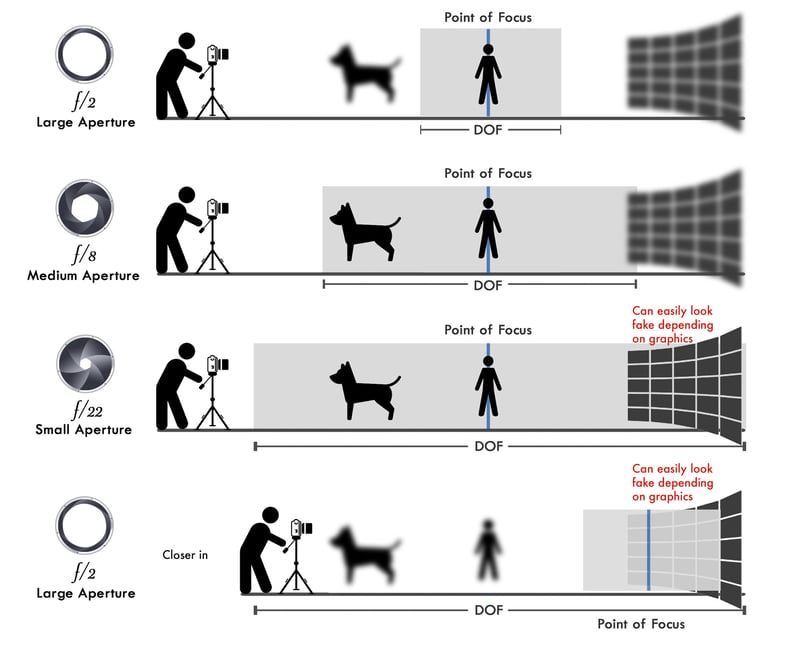Aperture is a cinematography term in filmmaking. In virtual production, the nuances of this term take on special meaning. In this post, we break down both the traditional definition and what you need to know about aperture specifically for virtual production.
Basic Definition:
First of all, what Is Aperture in filmmaking?
Aperture refers to the same thing in virtual production as it does in traditional production: it is the opening of a diaphragm through which light passes through a lens on a camera to its objective, either a film negative or a digital sensor. Measured in F-Stop, which is the theoretical value of a len’s aperture based on its construction and T-Stop, which is the actual measured results of the lens. Aperture influences the depth of field of a shot.
Virtual Production Specifics:
Here's What You Need To Know About Aperture In Virtual Production:
The key to achieving any depth of field effect is all in how the subject of the shot is focused. The Aperture defines how sharp or blurred are the objects located in the foreground and background of the shot.
So if you increase your aperture, you’ll have more elements in front and behind of your subject in focus, increasing the depth of field.

In virtual production, the "depth" of a shot's background is often an illusion created on a flat wall. You can shoot a subject that is technically 10 feet away from an LED wall, but the wall can make it look like there are miles of depth in the background.
Problems can arise in virtual production when the camera focuses on a flat wall with lots of "pretend" depth—especially when the subject is out of focus. This easily looks fake to the human eye when there is a mismatched level of focus of objects in the foreground and mid-ground versus apparent "miles" of focus in the background.

Additionally, the wrong aperture and distance can cause a camera to focus in on the actual LED pixels of a virtual background wall, which, of course, looks fake.
Cinematographers working in virtual production generally use aperture to create a depth of field that keeps the subject in focus and the wall out of focus, or that keeps both in focus. When using aperture to create a depth of field that focuses on the wall only, it is easiest when the background art does not have a wild amount of depth.
That said, clever use of aperture and virtual artwork can allow a cinematographer to get away with all sorts of depths of field, even those involving very deep backgrounds.
More resources on aperture in virtual production:
-1.png?width=290&name=Profile%20Pic%20(2)-1.png)
-1.png?width=2539&height=346&name=Transparent%20(2)-1.png)
.jpg?width=425&name=VP%20Glossary%20BGs%20(1).jpg)